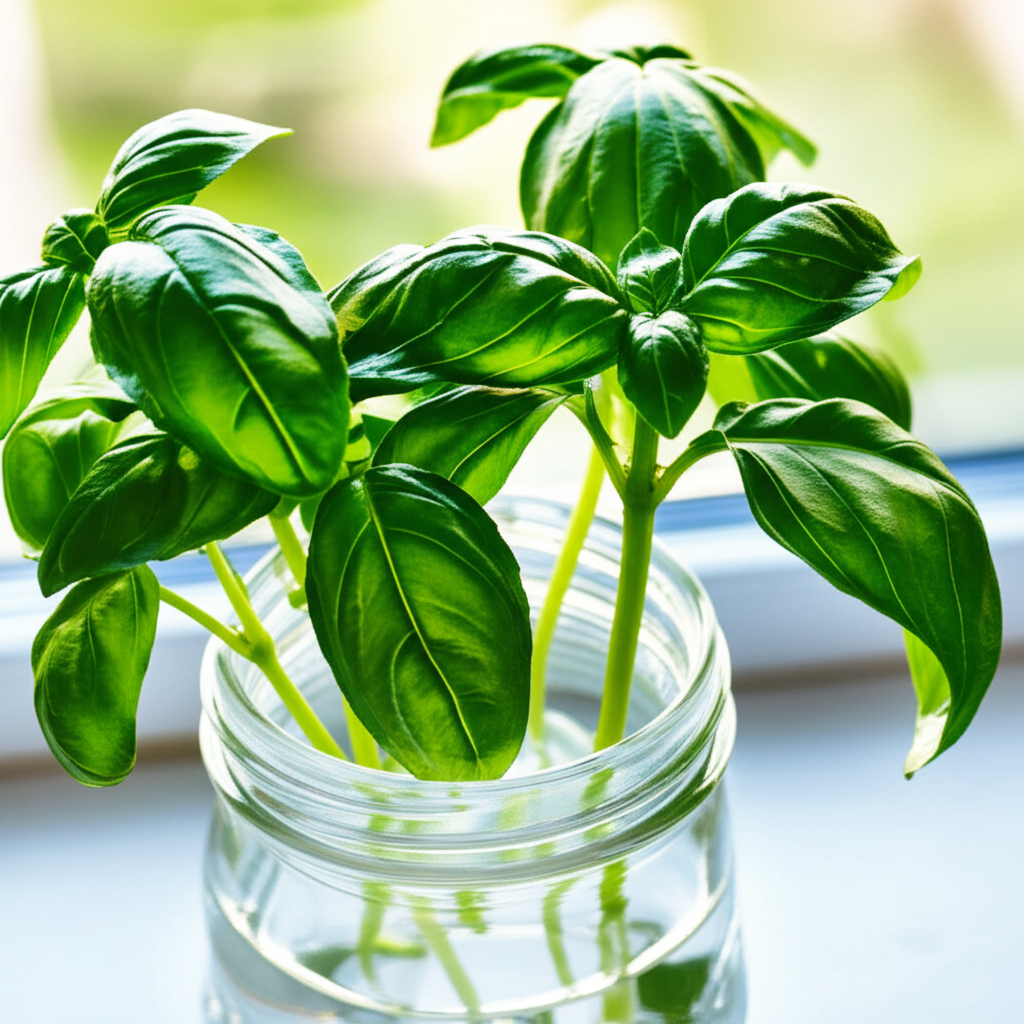Can You Grow Basil From Cuttings? Absolutely! Here’s How for Effortless Growth

Have you ever admired a lush, fragrant basil plant and wished you could magically multiply it for your kitchen or garden? That moment of wonder is the perfect starting point for a common gardening question: Can you grow basil from cuttings? The answer is a resounding YES, and mastering this technique is your ticket to an endless supply of this beloved herb, significantly boosting your garden’s productivity and offering a deeply satisfying, sustainable way to expand your basil patch. Growing basil from cuttings not only saves you money on purchasing new plants but also allows you to propagate your favorite varieties, ensuring you always have fresh basil for your culinary creations.
Quick Answer Box
Yes, you can absolutely grow basil from cuttings! Simply take a stem cutting from a healthy basil plant, remove the lower leaves, and place it in water or moist soil. With proper care, these cuttings will develop roots and grow into new, vibrant basil plants, providing you with an effortless way to expand your herb garden.
What is Basil Propagation by Cuttings and Why It’s Important in Gardening
Propagating basil from cuttings is a method of asexual reproduction, meaning you create a new plant from a part of an existing parent plant, in this case, a stem. This process bypasses the need for seeds and relies on the plant’s natural ability to form roots from nodes – the points on a stem where leaves emerge.
This technique is incredibly important in gardening for several reasons:
Cost-Effective: It’s a free way to get new plants, especially for popular herbs like basil that you might use frequently.
Speedy Results: Cuttings often establish roots and grow faster than seedlings started from seed, giving you a quicker harvest.
Genetic Consistency: Cuttings produce clones of the parent plant, ensuring you get the same flavor, aroma, and growth habit as your favorite basil variety. This is crucial for gardeners who have found a specific basil cultivar that excels in their climate or personal taste.
Revitalizing Older Plants: If your basil plant is getting leggy or past its prime, taking cuttings allows you to start fresh with young, vigorous plants while potentially extending the life of your original plant through rejuvenation.
Sustainability: It reduces the need to purchase new plants, minimizing your carbon footprint associated with transportation and packaging.
Quick Recommendations or Key Insights about Basil Plant from Cutting
Choose Healthy Stems: Select vibrant, disease-free stems from a mature basil plant.
Water is Your Friend: Basil cuttings root exceptionally well in water, making it an easy starting point.
Node Power: Ensure at least one leaf node is submerged in water or soil, as this is where roots will emerge.
Patience Pays Off: Roots can take anywhere from a week to several weeks to appear, so be patient!
Sunlight is Key: Place cuttings in bright, indirect light. Direct sun can scorch delicate new growth.
Detailed Breakdown of Growing Basil from Cuttings
Let’s dive deep into the art and science of growing basil from cuttings, ensuring you have all the knowledge for unparalleled success.
The Science Behind Basil Cuttings: Botany and Plant Biology
Basil, like many herbaceous plants, possesses remarkable vegetative propagation capabilities. The magic happens at the nodes. These are specialized areas on the stem where meristematic tissue is concentrated. Meristematic tissue is essentially a plant’s growth engine, containing undifferentiated cells that can divide and specialize into various plant tissues, including roots.
When you take a basil cutting and place it in a suitable medium (water or soil), these meristematic cells are stimulated by environmental cues like moisture and warmth. They begin to divide and differentiate, forming adventitious roots – roots that grow from non-root tissue, like a stem. The presence of auxins, a type of plant hormone naturally present in the stem, plays a crucial role in initiating root formation.
Why does this work so well for basil? Basil is a fast-growing annual herb with a relatively soft, herbaceous stem. This type of stem is generally more amenable to rooting than woody stems, as it has a higher water content and its tissues are more pliable and responsive to hormonal signals for root development.
Practical Applications in the Garden: From Snippet to Salad Bowl
The beauty of growing basil from cuttings lies in its immediate applicability to your gardening endeavors.
Succession Planting for Continuous Harvest: Don’t wait for your first basil plants to bolt (go to seed) and die. As soon as your initial plants are well-established and healthy, start taking cuttings. Root them and plant them out a few weeks later. This creates a staggered harvest, ensuring you have a continuous supply of fresh basil from spring through fall.
Replacing Bolting Plants: When you notice your basil starting to flower, harvest as much as you can, then immediately take cuttings from the remaining healthy stems. This allows you to replace the older, flowering plant with a new, vigorous one that will continue producing leaves.
Sharing the Bounty: Basil cuttings are a fantastic, free gift for fellow gardeners, friends, or family. Share your successful propagation techniques and spread the basil love!
Experimenting with Varieties: If you have a particularly flavorful or disease-resistant basil variety, taking cuttings is the best way to preserve and multiply that specific genetic material.
How to Grow Basil from Cuttings: Step-by-Step Instructions
This is where the magic truly happens. Follow these steps for guaranteed success:
Method 1: Water Propagation (Easiest for Beginners)
1. Select Your Cutting: Choose a healthy stem from your basil plant. Look for a stem that is at least 4-6 inches long and has several sets of leaves. Avoid stems that are flowering or have any signs of disease or damage.
2. Make the Cut: Using clean, sharp scissors or pruning shears, make a clean cut just below a leaf node. This is crucial,


